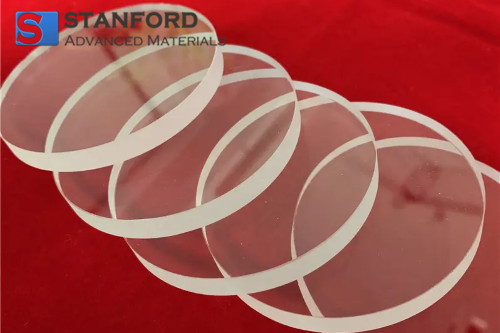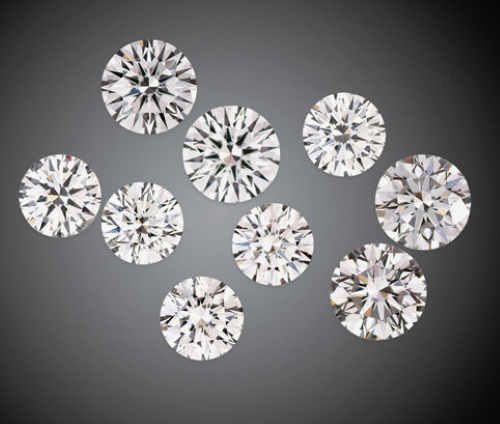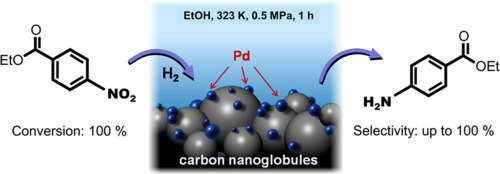CVD Diamond Wafers: Properties and Applications
Introduction
CVD diamond wafers, crafted through the chemical vapor deposition (CVD) process, are transforming industries that require materials with exceptional hardness, thermal conductivity, optical transparency, and electrical insulation. These synthetic diamonds, engineered for precision, provide unparalleled quality and versatility, making them a preferred choice across sectors like semiconductors, optics, quantum technologies, and more.

CVD Diamond Wafers and Their Unique Advantages
CVD diamond wafers are synthetic diamonds manufactured through an advanced chemical vapor deposition (CVD) process. In this method, carbon atoms are deposited onto a substrate in a vacuum chamber, forming a crystalline structure. This precise process allows unmatched control over the wafer’s thickness, purity, and crystal orientation, ensuring consistency and quality that natural diamonds cannot provide.
Unlike natural diamond, CVD diamond can be tailored to meet the specific needs of various applications. This customizability makes them a versatile solution across multiple industries. While natural diamonds are limited by availability and natural imperfections, CVD diamond wafers are scalable for mass production, offering uniform quality at every stage. Additionally, their exceptional purity and consistency eliminate the flaws often found in natural diamonds, ensuring superior performance in demanding applications.

Key Properties of CVD Diamond Wafers
CVD diamond wafers also stand out for the unique characteristics:
- Exceptional Hardness: Recognized as one of the hardest materials, CVD diamond wafers excel in wear-resistant coatings and cutting tools, delivering unmatched durability in high-stress environments.
- High Thermal Conductivity: Their ability to efficiently dissipate heat makes them indispensable for high-power electronic devices, such as transistors and diodes, where managing temperature is critical.
- Electrical Insulation: With excellent dielectric properties and a high breakdown voltage, these wafers serve as ideal materials for advanced electronic applications.
- Optical Transparency: Offering exceptional clarity across ultraviolet (UV), visible, and infrared (IR) spectral ranges, CVD diamond wafers are widely used in optics and photonics.
- Chemical Stability: Resistant to corrosion and harsh environmental conditions, these wafers perform reliably in demanding applications, from industrial tools to biomedical devices.
Applications across Industries
Therefore, CVD diamond wafers have emerged as a groundbreaking material for industries ranging from electronics and optics to quantum technologies and beyond. Their exceptional qualities position them as a cornerstone for innovation in both current and future applications.
1. Electronics and Semiconductors
CVD diamond wafers are revolutionizing the semiconductor industry with their unique thermal and electrical properties.
- Thermal Management: Their unparalleled thermal conductivity dissipates heat efficiently, preventing overheating in high-power devices like transistors and diodes.
- Substrates for Semiconductors: Widely used with materials like gallium nitride (GaN) in power electronics and RF devices, ensuring high efficiency and durability.
- Microwave Applications: Ideal for RF systems, handling high-frequency signals with minimal loss.
2. Optics and Photonics
CVD diamond wafers excel in optical applications due to their clarity, thermal resistance, and durability.
- Laser Windows and Lenses: Their transparency and resistance to thermal stress make them perfect for high-precision laser cutting systems.
- Infrared Optics: Low absorption and high transmission in IR ranges suit thermal imaging and spectrometers.
- Durable Coatings: Protect sensitive optical components in challenging environments.
3. Mechanical Applications
The extreme hardness and wear resistance of CVD diamond wafers make them indispensable in industrial tools and coatings.
- Cutting and Drilling Tools: Enhance performance and lifespan when used in machining ceramics and metals.
- Protective Coatings: Improve durability and resistance to abrasion and corrosion in mechanical parts.
4. Quantum Technologies
CVD diamond wafers are gaining prominence in cutting-edge quantum computing and sensing applications.
- Quantum Computing: Nitrogen-vacancy (NV) centers in CVD diamonds act as qubits for developing quantum processors.
- Advanced Sensors: High sensitivity to magnetic and electric fields benefits scientific research and medical imaging.
- Photon Sources: Essential for secure communication and encryption through single-photon generation.
5. Optics and Medical Applications
In healthcare, CVD diamond wafers' biocompatibility and stability enable their use in advanced medical devices.
- Biomedical Implants: Chemical inertness makes them ideal for joint replacements and other long-term implants.
- Radiation Detectors: High sensitivity under radiation is valuable in oncology and diagnostics.
- Surgical Tools: Hard coatings enhance precision and durability.
6. Aerospace and Defense
CVD diamond wafers offer unmatched reliability for critical aerospace and defense applications.
- Thermal Shields: Protect sensitive components in high-heat environments.
- Optical Sensors: Enhance imaging and targeting systems in satellites and defense equipment.
7. Energy and Environmental Applications
CVD diamond wafers contribute to sustainable energy systems and environmental innovations.
- Heat Spreaders: Effective thermal management for renewable energy systems, including solar panels and wind turbines.
- Water Treatment: Facilitate the breakdown of contaminants as electrodes in advanced oxidation processes.
8. Future Trends in CVD Diamond Applications
As technology advances, CVD diamond wafers are poised to revolutionize emerging fields, including:
- Next-Generation Electronics: Supporting innovations in 5G networks and beyond.
- Renewable Energy: Enhancing the efficiency of photovoltaic systems.
- Wearable Technology: Lightweight and durable materials for smart devices.
Summary Table of CVD Diamond Wafers across Industries
|
Industry |
Applications |
Key Benefits |
|
Electronics & Semiconductors |
Thermal management, semiconductor substrates, microwave and RF applications |
Efficient heat dissipation, high efficiency, minimal signal loss |
|
Optics & Photonics |
Laser windows, infrared optics, durable coatings |
High transparency, thermal resistance, durability in harsh environments |
|
Mechanical Applications |
Cutting and drilling tools, protective coatings |
Enhanced performance, wear resistance, corrosion protection |
|
Quantum Technologies |
Quantum computing, advanced sensors, photon sources |
Qubits for processors, magnetic/electric field sensitivity, secure communication |
|
Medical Applications |
Biomedical implants, radiation detectors, surgical tools |
Biocompatibility, stability under radiation, precision, and durability |
|
Aerospace & Defense |
Thermal shields, optical sensors |
Heat resistance, improved imaging and targeting systems |
|
Energy & Environment |
Heat spreaders, water treatment electrodes |
Thermal management, effective contaminant breakdown |
|
Future Trends |
Next-gen electronics, renewable energy, wearable technology |
Support for 5G, enhanced photovoltaic efficiency, durable materials for devices |
For more advanced materials, please check Stanford Advanced Materials (SAM).
Conclusion
CVD diamond wafers offer unmatched performance across industries, making them indispensable for semiconductor applications, optical advancements, and more. Their combination of durability, scalability, and precision enables innovative solutions in electronics, quantum computing, medical devices, and aerospace technologies. As the demand for high-performance materials grows, these wafers will continue to set new standards, driving technological progress across industries.
Reference:
[1] Willems, Bert & Tallaire, Alexandre & Barjon, Julien. (2011). Exploring the Origin and Nature of Luminescent Regions in CVD Synthetic Diamond. Gems & Gemology. 47. 202-207. 10.5741/GEMS.47.3.202



